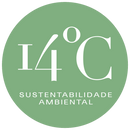Organic carbon, called blue carbon, is CO2 captured on the ocean coast, mostly through seagrass, salt marshes and mangroves.
These ecosystems, made up of plants, which through the photosynthesis carried out, incorporate CO2, leaving the carbon sedimented underneath them, contribute significantly to the reduction, and consequent mitigation, of CO2 in the atmosphere. The plants mentioned above are extremely efficient in retaining this component (even more efficient than terrestrial forests), preventing CO2 from resuming its cycle - which would cause it to return to the atmosphere and contribute to the greenhouse effect. The mentioned coastal systems develop on the coast, in regions characterized by high population density, contributing to their degradation, affecting their contribution to the sustainable decarbonization
Portugal, being a coastal country, has excellent conditions to develop these ecosystems, however, “the signals offered at a national level, namely at the level of the Roadmap for Carbon Neutrality 2050, do not seem to us to have reflected the potential weight this important theme for national environmental policy and, as well, what could be the respective long-term contribution to the achievement of political goals and objectives at the European Union level for the period from 2021 to 2030.”
Sources:
